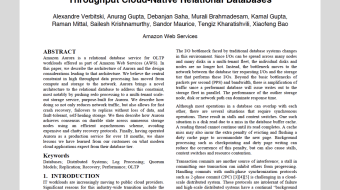Customer-obsessed science


Research areas
-
September 26, 2025To transform scientific domains, foundation models will require physical-constraint satisfaction, uncertainty quantification, and specialized forecasting techniques that overcome data scarcity while maintaining scientific rigor.
-
Featured news
-
WSDM 20242024Embedding-based Retrieval Models (ERMs) have emerged as a promising framework for large-scale text retrieval problems due to powerful large language models. Nevertheless, fine-tuning ERMs to reach state-of-the-art results can be expensive due to the extreme scale of data as well as the complexity of multi-stages pipelines (e.g., pre-training, fine-tuning, distillation). In this work, we propose the PEFA
-
WACV 20242024Training fingerprint recognition models using synthetic data has recently gained increased attention in the biometric community as it alleviates the dependency on sensitive personal data. Existing approaches for fingerprint generation are limited in their ability to generate diverse impressions of the same finger, a key property for providing effective data for training recognition models. To address this
-
WACV 20242024Lipstick virtual try-on (VTO) experiences have become widespread across the e-commerce sector and assist users in eliminating the guesswork of shopping online. How-ever, such experiences still lack in both realism and accuracy. In this work, we propose LipAT, a neural framework that blends the strengths of Physics-Based Rendering (PBR) and Neural Style Transfer (NST) approaches to directly apply lipstick
-
WACV 20242024Large vision-language representation learning models like CLIP have demonstrated impressive performance for zero-shot transfer to downstream tasks while largely benefiting from inter-modal (image-text) alignment via contrastive objectives. This downstream performance can further be enhanced by full-scale fine-tuning which is often compute intensive, requires large labelled data, and can reduce out-of-distribution
-
WACV 20242024In this paper, we address the detection of co-occurring salient objects (CoSOD) in an image group using frequency statistics in an unsupervised manner, which further enable us to develop a semi-supervised method. While previous works have mostly focused on fully supervised CoSOD, less attention has been allocated to detecting co-salient objects when limited segmentation annotations are available for training
Collaborations
View allWhether you're a faculty member or student, there are number of ways you can engage with Amazon.
View all














































